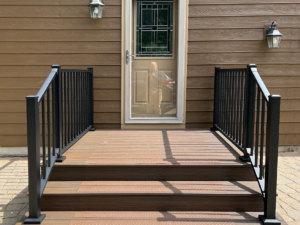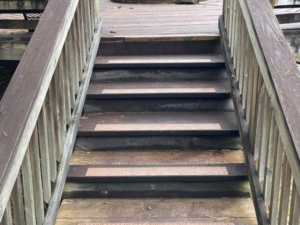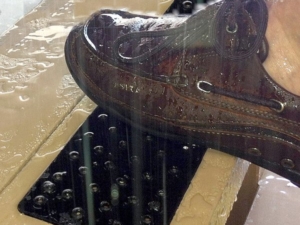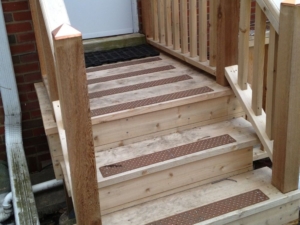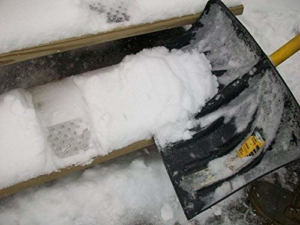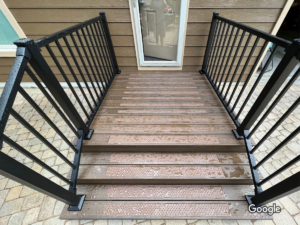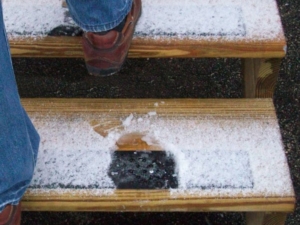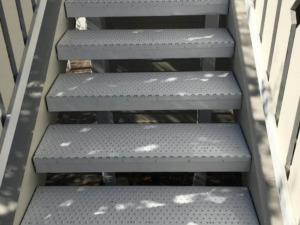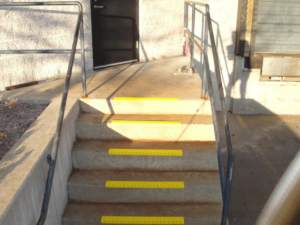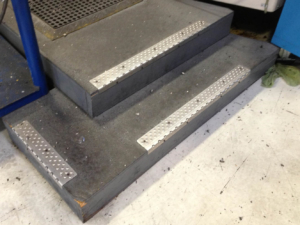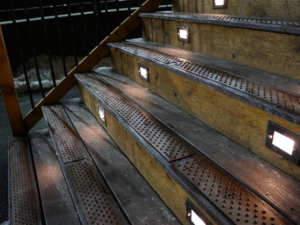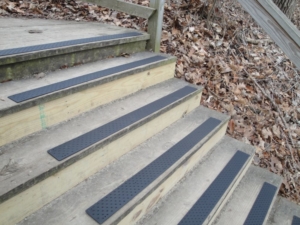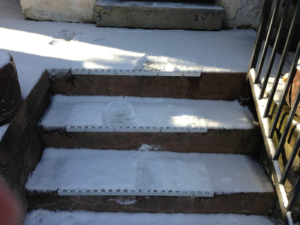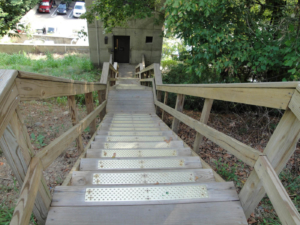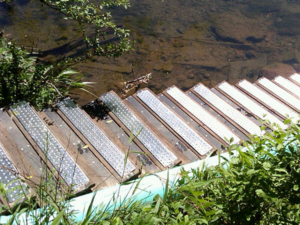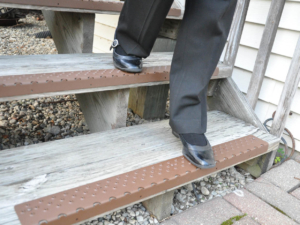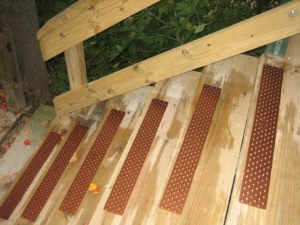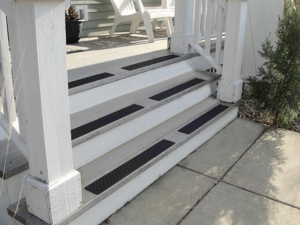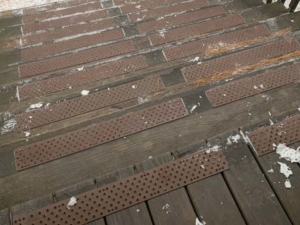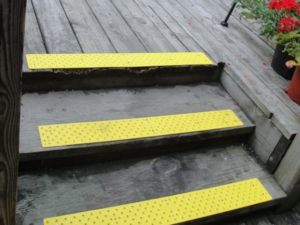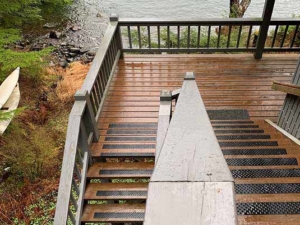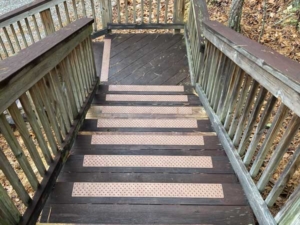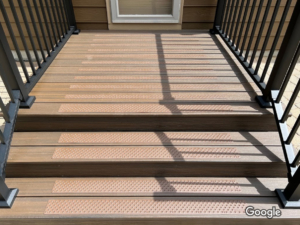SLIP & FALL PROBLEMS AREAS ON STAIRS
Did you know that 4% of all emergency room visits and 15% of fall-related injuries occur on stairs or in conjunction with handrails or banisters? That’s a fairly staggering number considering many able-bodied people use stairs daily. It can also be a frightening number to homeowners with multiple-story homes when their family’s safety is their #1 priority.
While most injuries happen when going down the stairs, many people become injured after missing their footing while going up the stairs. The issue is further complicated as the length, construction, and placement of stairways can vary greatly. While building codes often dictate the rise and run of stairs, older staircases and those not built to code create unique problems.
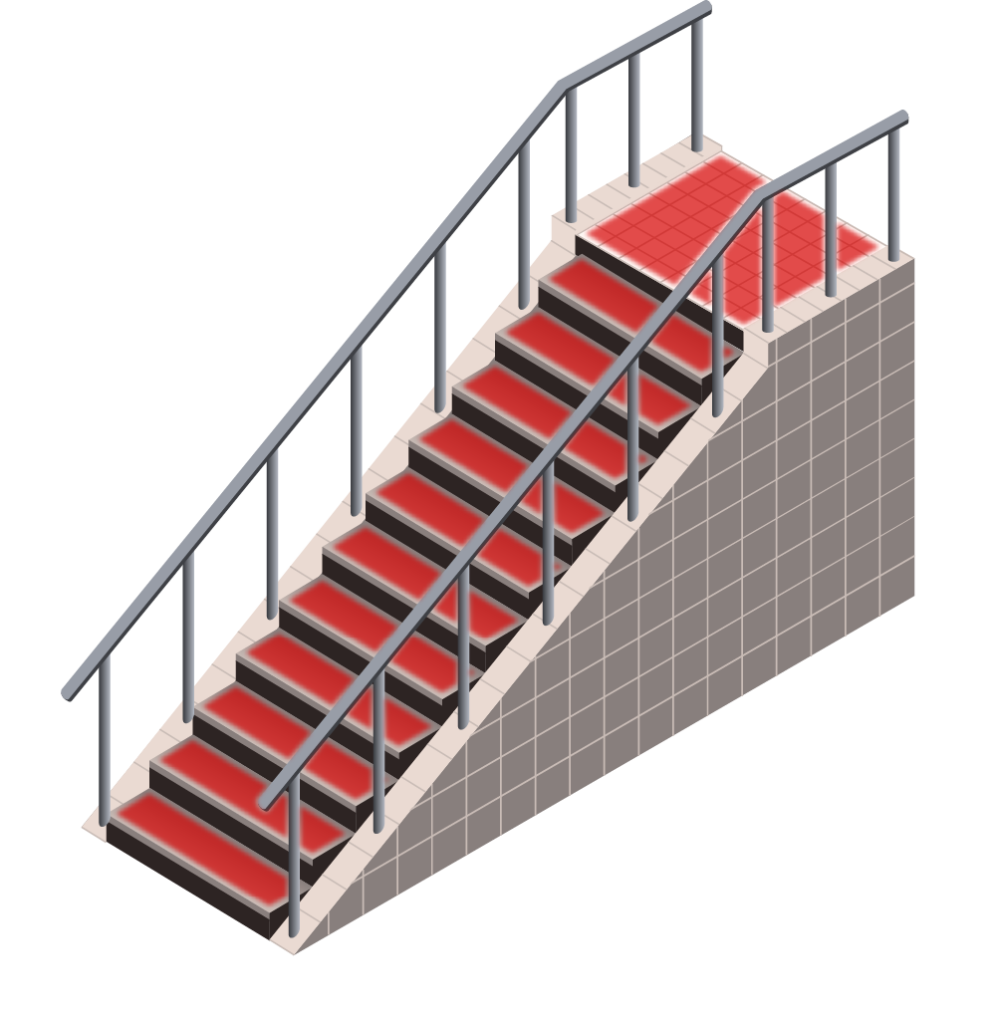
Stairs can be made of basic lumber, finished hardwood, glass, composite material, metal, or concrete. They can be carpeted, covered in polished stone, painted, or unpainted. Because this category is so broad, it is best to categorize the process of reducing slips and falls into prevention and mitigation.
PREVENTION
Many times, people will wait until an accident occurs, like a fall that sends you to the ER, before taking fall prevention seriously. Like most things, no one thinks it will happen to them until it does. Recognizing unsafe behaviors can go a long way in preventing injuries on stairs. Some of the most accessible ways to prevent stairway injuries are to:- Use Handrails When Available: When using stairs without a handrail, we’ll often have only a single foot, which is only a single point of contact, on the stairs. A hand on the rail provides another point of contact, increasing stability and providing a way to recover should we start to fall. This also makes it evident that no one should be running up and down the stairway, as the movement of the arms interferes with the use of the handrail.
- Make Smart Footwear Choices: Worn-out shoes, slippery soles, high heels, clothing that falls below foot level, untied shoelaces, and wearing only socks all contribute to unsafe situations. While we’ve all experienced how slippery socks can be on hardwood floors and stairs, we continue this unsafe behavior because wearing socks is a simple solution to cold feet. A small change, such as a warm pair of slippers with nonslip soles, can make all the difference.
- Be Careful When Carrying Items: Carrying anything on the stairs increases your risk of an accident. Your attention is split between what you’re holding and where you are walking. Your weight distribution and balance are affected, and the greater physical effort can result in missteps. Because your hands aren’t available to hold onto the handrails, your view of the stairs may be blocked by the object you’re carrying. Carrying children down stairs results in about five thousand child injuries a year. In fact, children who are injured when being carried are more severely injured than those who fall on their own. If you have to carry something on the stairs, focus on carrying things safely. Making multiple trips with smaller and lighter loads will make you safer.
- Keep Stairs Clean: Keep your stairs clear of clutter and clean up spills immediately. Waiting until later can result in accidents. Stairways in residential environments can also be slowly consumed with items like folded clothes waiting to go upstairs, but in order to avoid creating any slip and fall hazards, it is essential to keep the stairway clear.
MITIGATION
You can mitigate the slip, trip, and fall risks on stairs by mitigating design, construction, and material flaws that often lead to slips and falls. You can also reduce risk by mitigating the environmental conditions that encourage falls. Here are ways to mitigate the inherent risk from stairs.- Install Handrails: Stairs should have a well-secured handrail, if at all possible. Using a handrail while ascending or descending stairs adds a second point of stability that will often allow you to “catch” a slip before it becomes a fall. Don’t overlook locations with just one or two steps, like a transition between your home and garage or the steps leading up to your porch.
- Repair or Replace Worn or Cracked Steps: Take care of problems right away. If you notice loose, uneven, cracked, or broken steps; broken or chipped stair edges; and nosings (front-edge guards) that are bent and do not lie flat, address these issues as quickly as possible. By maintaining stairs properly, or retrofitting them with tread caps like our HandiTreads nosings, you can minimize the risk posed by the physical deterioration of stair treads. HandiTreads aluminum stair treads and nosings prevent slips, trips, and falls by increasing the traction on the step while also increasing the structural integrity of the steps. The treads are also offered in four refined earth-toned shades that either blend in or create an elegant contrast with any surface to which they are applied, making them the ideal anti-slip solution for homeowners who value both form and function.
- Ensure Stairs Have a Standard Rise and Run: A standard step has a 7-inch rise with an 11-inch-wide run. We expect this—our muscle memory is trained for this pattern. A serious design flaw, such as stair riser height that varies on the same set of stairs, can mean that we are taken by surprise and our balance is affected. Stairs that have a higher than average rise will cause us to stumble. A lower-than-average rise will require a lot of extra steps and will feel unnatural. Stair treads that are too narrow provide too little space to properly place our feet, and treads that are too wide create an unnatural gait and require extra concentration to keep from landing on the stair edge.
- Anticipate Weather Conditions: If the stairway or steps at your home are located outdoors, like steps leading to a deck or porch, they will be exposed to elements like rain, snow, frost, and even mold. These conditions can cause stairs to become dangerous slip and fall hazards. The best way to prevent injuries due to slips, trips, and falls on outdoor stairways and steps is to install anti-slip products that will help provide continuous traction. HandiTreads are a permanent anti-slip solution that provides slip, trip, and fall prevention in virtually any weather condition. With their patented raised-button traction surface, the treads create a solid contact between shoe and stair tread in rain, sleet, and even up to one inch of snow. If there is a large amount of snow accumulated on the stairway, you can remove it using a snow shovel, unlike with grit tape or rubber treads. Unlike other anti-slip products, HandiTreads provide slip and fall protection throughout the year in all weather conditions and have a lifetime residential warranty.

